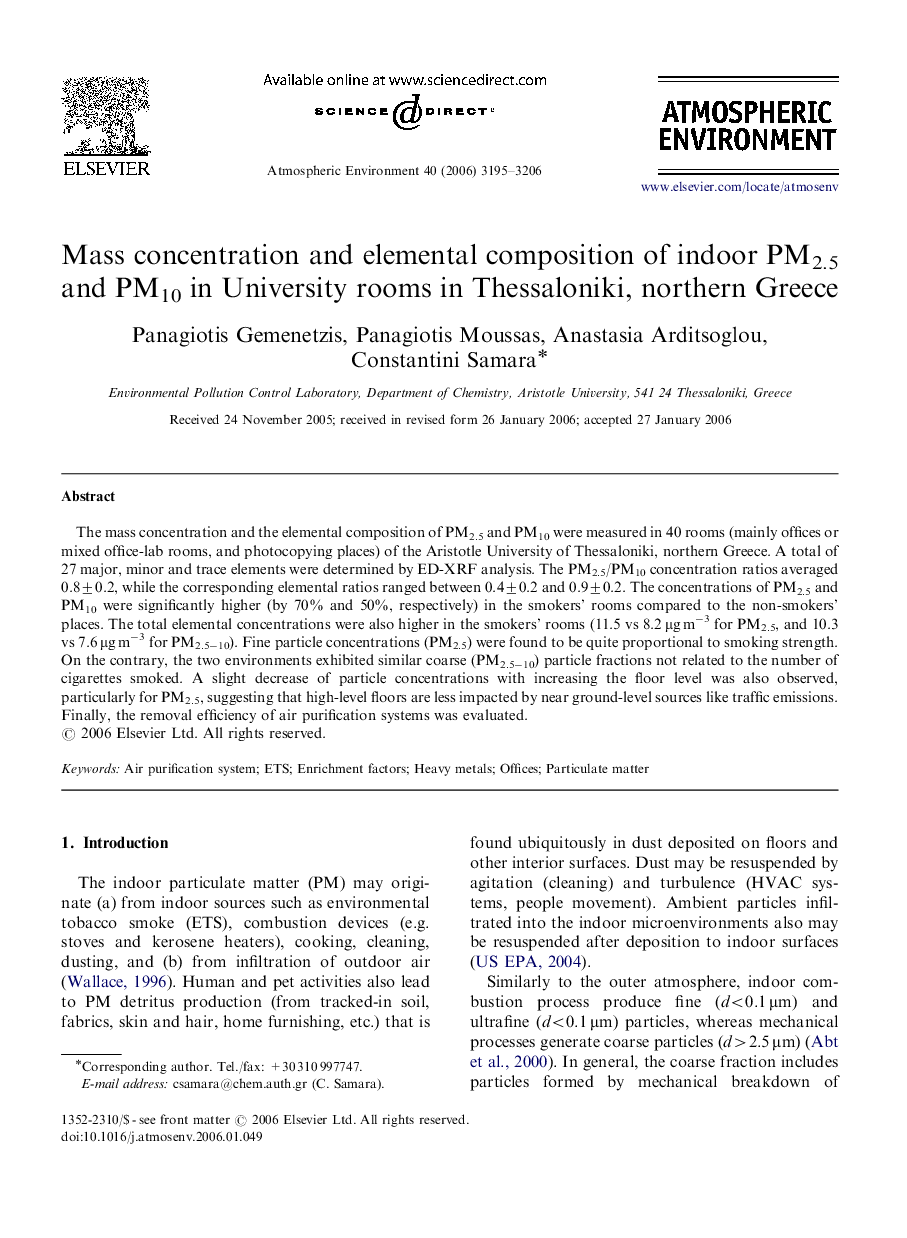| Article ID | Journal | Published Year | Pages | File Type |
|---|---|---|---|---|
| 4444742 | Atmospheric Environment | 2006 | 12 Pages |
The mass concentration and the elemental composition of PM2.5 and PM10 were measured in 40 rooms (mainly offices or mixed office-lab rooms, and photocopying places) of the Aristotle University of Thessaloniki, northern Greece. A total of 27 major, minor and trace elements were determined by ED-XRF analysis. The PM2.5/PM10 concentration ratios averaged 0.8±0.2, while the corresponding elemental ratios ranged between 0.4±0.2 and 0.9±0.2. The concentrations of PM2.5 and PM10 were significantly higher (by 70% and 50%, respectively) in the smokers’ rooms compared to the non-smokers’ places. The total elemental concentrations were also higher in the smokers’ rooms (11.5 vs 8.2 μg m−3 for PM2.5, and 10.3 vs 7.6 μg m−3 for PM2.5−10). Fine particle concentrations (PM2.5) were found to be quite proportional to smoking strength. On the contrary, the two environments exhibited similar coarse (PM2.5−10) particle fractions not related to the number of cigarettes smoked. A slight decrease of particle concentrations with increasing the floor level was also observed, particularly for PM2.5, suggesting that high-level floors are less impacted by near ground-level sources like traffic emissions. Finally, the removal efficiency of air purification systems was evaluated.
